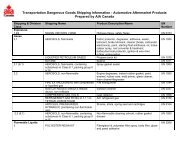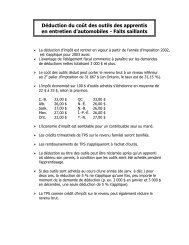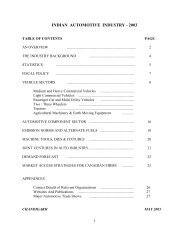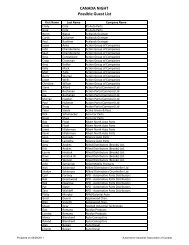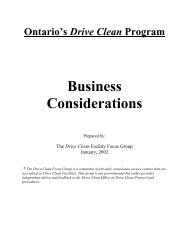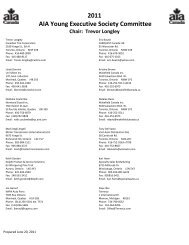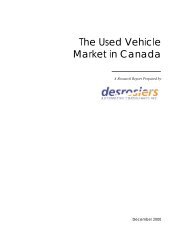Euro 5 Impact Assessment - Automotive Industries Association of ...
Euro 5 Impact Assessment - Automotive Industries Association of ...
Euro 5 Impact Assessment - Automotive Industries Association of ...
Create successful ePaper yourself
Turn your PDF publications into a flip-book with our unique Google optimized e-Paper software.
• In addition, the 5 mg/km limit is in line with the standards proposed for lean-burnpetrol vehicles.- 200 mg/km emission limit value for NO XThe reasons for selecting this emission limit value are as follows:• It is the lowest limit that can be achieved without requiring the installation <strong>of</strong> a NO Xafter-treatment device on most <strong>of</strong> the vehicles.• The pace <strong>of</strong> replacement <strong>of</strong> older, more polluting vehicles is crucial for improving theair quality. The proposal already specifies a PM limit value that would necessitate theinstallation <strong>of</strong> a particulate filter.• Any lower NOx limit would require the additional installation <strong>of</strong> a NO X aftertreatmentdevice and would imply a considerable increase in costs that could slowdown the turnover <strong>of</strong> the existing fleet.• A relatively higher increase in the price <strong>of</strong> a diesel vehicle might result in a shift <strong>of</strong> thedemand from diesel vehicles towards petrol cars.• The lower share <strong>of</strong> diesel vehicles would have a negative effect on the reduction <strong>of</strong>greenhouse gases, as petrol vehicles emit considerably more CO 2 than diesel vehicles.• The improvement in CO 2 emissions that <strong>Euro</strong>pe has seen in recent years and whichwas to a large degree due to an increasing market share <strong>of</strong> diesel vehicles. Substantialchanges in the current balance between petrol and diesel vehicles would then risk thereductions in CO 2 emissions that have occurred so far..6.5.2. Petrol Emission LimitsThe impact assessment has shown that further tightening <strong>of</strong> the emission limits for petrolvehicles is justified. Reducing emissions further can be simply achieved through betteroptimising the after-treatment system – which is a longstanding and well proventechnology. The impact assessment shows that a HC emission limit value <strong>of</strong> 75 mg/kmand a NO X value <strong>of</strong> 60 mg/km is the most cost-effective scenario for petrol vehicles.- 75 mg/km emission limit value for HC• The information provided by stakeholders suggested that there was no cost differencebetween keeping the limit value at 100 mg/km and reducing it to 75 mg/km.• However, further reduction <strong>of</strong> the limit would impose higher costs.- 60 mg/km emission limit value for NO XA NO X limit value <strong>of</strong> 60 mg/km was selected for the following reasons:• It provides for a high level <strong>of</strong> environmental protection.• It ensures the affordability <strong>of</strong> vehicles for the consumers. This way, the turnover rate <strong>of</strong>the existing fleet can be maintained and therefore, the improvement <strong>of</strong> air quality isensured.30



